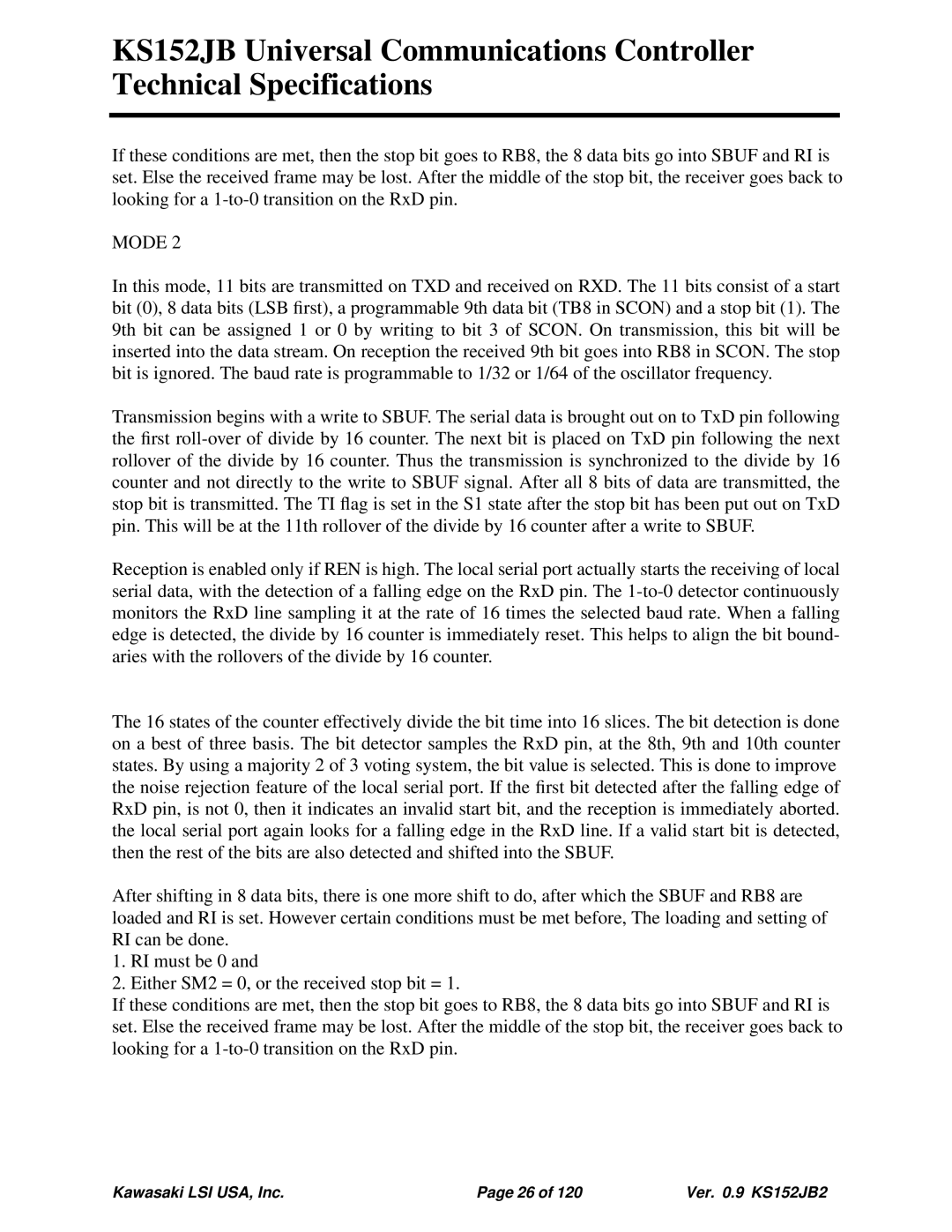KS152JB Universal Communications Controller Technical Specifications
If these conditions are met, then the stop bit goes to RB8, the 8 data bits go into SBUF and RI is set. Else the received frame may be lost. After the middle of the stop bit, the receiver goes back to looking for a
MODE 2
In this mode, 11 bits are transmitted on TXD and received on RXD. The 11 bits consist of a start bit (0), 8 data bits (LSB first), a programmable 9th data bit (TB8 in SCON) and a stop bit (1). The 9th bit can be assigned 1 or 0 by writing to bit 3 of SCON. On transmission, this bit will be inserted into the data stream. On reception the received 9th bit goes into RB8 in SCON. The stop bit is ignored. The baud rate is programmable to 1/32 or 1/64 of the oscillator frequency.
Transmission begins with a write to SBUF. The serial data is brought out on to TxD pin following the first
Reception is enabled only if REN is high. The local serial port actually starts the receiving of local serial data, with the detection of a falling edge on the RxD pin. The
The 16 states of the counter effectively divide the bit time into 16 slices. The bit detection is done on a best of three basis. The bit detector samples the RxD pin, at the 8th, 9th and 10th counter states. By using a majority 2 of 3 voting system, the bit value is selected. This is done to improve the noise rejection feature of the local serial port. If the first bit detected after the falling edge of RxD pin, is not 0, then it indicates an invalid start bit, and the reception is immediately aborted. the local serial port again looks for a falling edge in the RxD line. If a valid start bit is detected, then the rest of the bits are also detected and shifted into the SBUF.
After shifting in 8 data bits, there is one more shift to do, after which the SBUF and RB8 are loaded and RI is set. However certain conditions must be met before, The loading and setting of RI can be done.
1.RI must be 0 and
2.Either SM2 = 0, or the received stop bit = 1.
If these conditions are met, then the stop bit goes to RB8, the 8 data bits go into SBUF and RI is set. Else the received frame may be lost. After the middle of the stop bit, the receiver goes back to looking for a
Kawasaki LSI USA, Inc. | Page 26 of 120 | Ver. 0.9 KS152JB2 |
